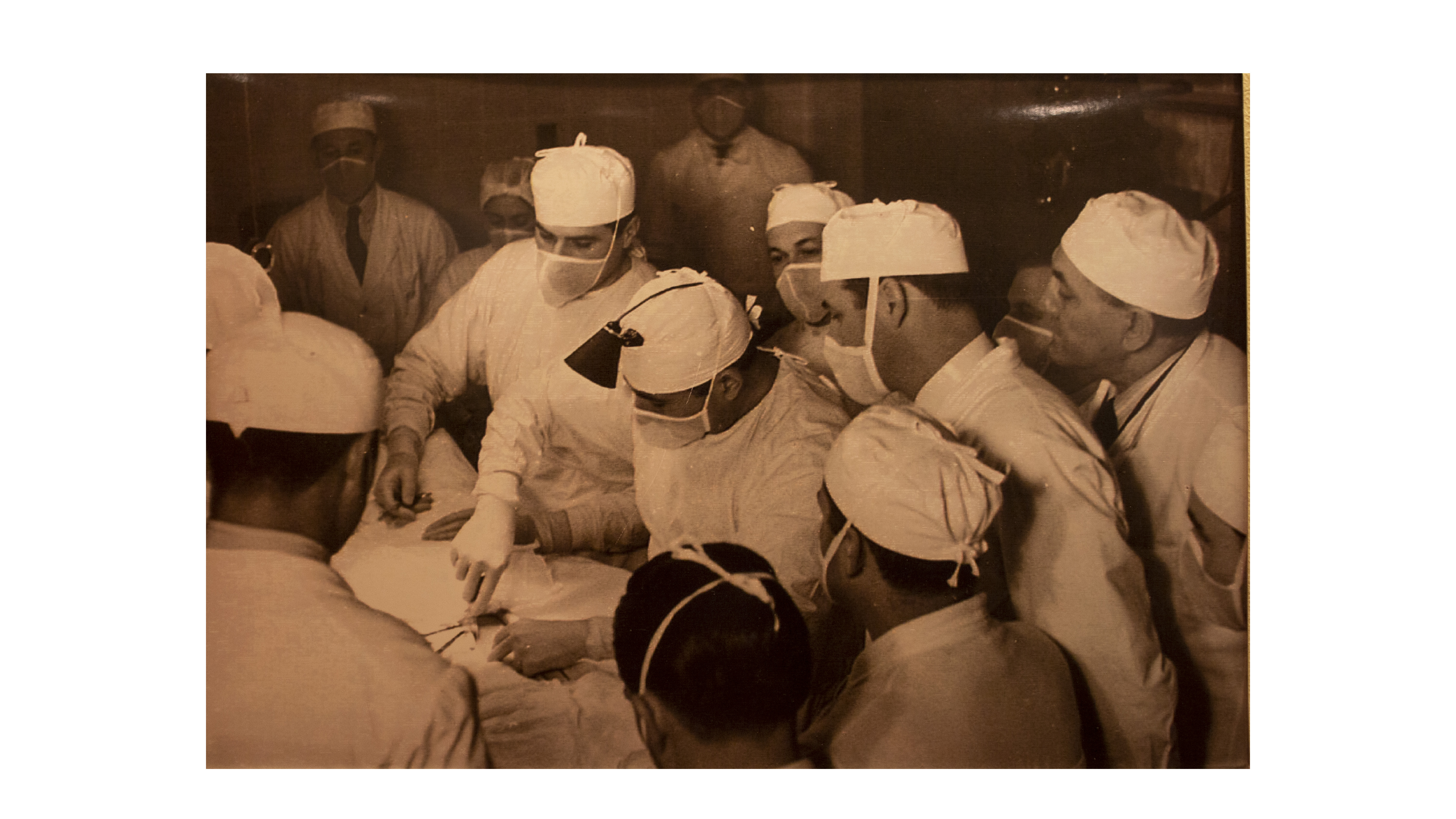Isolated facial diplegia as an atypical variant of Guillain-Barre syndrome after suspected SARS-CoV-2 infection
DOI:
https://doi.org/10.31053/1853.0605.v78.n4.32392Keywords:
guillain-barre syndrome, coronavirus infections, facial paralysis, betacoronavirusAbstract
Introduction: Since the SARS-CoV-2 pandemics began, multiple cases of Guillain-Barre syndrome secondary to COVID-19 have been described. Its typical presentation consists of the triad of paresthesia, ascending muscle weakness and areflexia, although there are several regional variants such as facial diplegia.
Case presentation: Two weeks after a contact with a confirmed case of COVID-19, a 35-year-old woman presents with viral myopericarditis. Laboratory studies for autoimmune diseases come back negative, as well as multiple viral serologies. She presents anti-SARS-CoV-2 IgG, with negative PCR. A week after discharge she presents with palsy of both facial nerves, without other neurological abnormalities. She undergoes examination with cranial CT without findings, and an EMG which shows bilateral alteration of facial nerves. She refuses the performance of a lumbar puncture.
Discussion: Facial diplegia can occur because of several illnesses, such as meningeal or brainstem tumors, infectious agents, Guillain-Barre syndrome, autoimmune diseases, trauma, metabolic causes or congenital causes. In our patient, having discarded other etiologies with imaging and analytical studies, the most probable cause is the Guillain-Barre syndrome. It is possibly secondary to SARS-CoV-2 infection given the presence of anti-SARS-CoV-2 IgG antibodies after contact with a confirmed case.
Conclusion: This case supports the hypothesis that COVID-19 may trigger the Guillain-Barre syndrome, specifically as facial diplegia, which is an atypical variant that should be known to be early diagnosed and treated as part of this syndrome.
Downloads
References
1. Marzo Sola M, Vaquero Garrido M, Bártulos Iglesias M, Gil Pujades A. Variante facial del síndrome de Guillain-Barré en un paciente, días después de vacunarse de la gripe A. Neurología. 2011 Apr;26(3):186-8. doi: 10.1016/j.nrl.2010.05.009.
2. Casademont Pou JM, Rojas García R. Enfermedades de los nervios periféricos. In: Farreras Rozman Medicina Interna, vol. II. Barcelona: Elsevier; 2016. p. 1470
3. Agosti E, Giorgianni A, D'Amore F, Vinacci G, Balbi S, Locatelli D. Is Guillain-Barrè syndrome triggered by SARS-CoV-2? Case report and literature review. Neurol Sci. 2021 Feb;42(2):607-612. doi: 10.1007/s10072-020-04553-9.
4. Lowe J, Pfaff J. The Ultimate Poker Face: A Case Report of Facial Diplegia, a Guillain-Barré Variant. Clin Pract Cases Emerg Med. 2020 Apr 23;4(2):150-153. doi: 10.5811/cpcem.2020.2.45556.
5. España. Ministerio de Sanidad. Centro de Coordinación de Alertas y Emergencias Sanitarias. Actualización nº 335. Enfermedad por el coronavirus (COVID-19). 18.03.2021. Disponible en: https://www.mscbs.gob.es/profesionales/saludPublica/ccayes/alertasActual/nCov/documentos/Actualizacion_335_COVID-19.pdf
6. Keane JR. Bilateral seventh nerve palsy: analysis of 43 cases and review of the literature. Neurology. 1994 Jul;44(7):1198-202. doi: 10.1212/wnl.44.7.1198.
7. Varol S, Ozdemir HH, Akil E, Arslan D, Aluclu MU, Demir CF, Yucel Y. Facial diplegia: etiology, clinical manifestations, and diagnostic evaluation. Arq Neuropsiquiatr. 2015 Dec;73(12):998-1001. doi: 10.1590/0004-282X20150174.
8. Pothiawala S, Lateef F. Bilateral facial nerve palsy: a diagnostic dilemma. Case Rep Emerg Med. 2012;2012:458371. doi: 10.1155/2012/458371.
9. Wakerley BR, Yuki N. Isolated facial diplegia in Guillain-Barré syndrome: Bifacial weakness with paresthesias. Muscle Nerve. 2015 Dec;52(6):927-32. doi: 10.1002/mus.24887.
10. Kumar R, Kumar J, Daly C, Edroos SA. Acute pericarditis as a primary presentation of COVID-19. BMJ Case Rep. 2020 Aug 18;13(8):e237617. doi: 10.1136/bcr-2020-237617.
11. Tung-Chen Y. Acute pericarditis due to COVID-19 infection: An underdiagnosed disease? Med Clin (Barc). 2020 Jul 10;155(1):44-45. doi: 10.1016/j.medcli.2020.04.007.
12. Mao L, Jin H, Wang M, Hu Y, Chen S, He Q, Chang J, Hong C, Zhou Y, Wang D, Miao X, Li Y, Hu B. Neurologic Manifestations of Hospitalized Patients With Coronavirus Disease 2019 in Wuhan, China. JAMA Neurol. 2020 Jun 1;77(6):683-690. doi: 10.1001/jamaneurol.2020.1127.
13. Abolmaali M, Heidari M, Zeinali M, Moghaddam P, Ramezani Ghamsari M, Jamshidi Makiani M, Mirzaasgari Z. Guillain-Barré syndrome as a parainfectious manifestation of SARS-CoV-2 infection: A case series. J Clin Neurosci. 2021 Jan;83:119-122. doi: 10.1016/j.jocn.2020.11.013.
14. Juliao Caamaño DS, Alonso Beato R. Facial diplegia, a possible atypical variant of Guillain-Barré Syndrome as a rare neurological complication of SARS-CoV-2. J Clin Neurosci. 2020 Jul;77:230-232. doi: 10.1016/j.jocn.2020.05.016.
15. Costello F, Dalakas MC. Cranial neuropathies and COVID-19: Neurotropism and autoimmunity. Neurology. 2020 Aug 4;95(5):195-196. doi: 10.1212/WNL.0000000000009921.
16. Paliwal VK, Garg RK, Gupta A, Tejan N. Neuromuscular presentations in patients with COVID-19. Neurol Sci. 2020 Nov;41(11):3039-3056. doi: 10.1007/s10072-020-04708-8.
Downloads
Published
Issue
Section
License
Copyright (c) 2021 Universidad Nacional de Córdoba

This work is licensed under a Creative Commons Attribution-NonCommercial 4.0 International License.
The generation of derivative works is allowed as long as it is not done for commercial purposes. The original work may not be used for commercial purposes.







